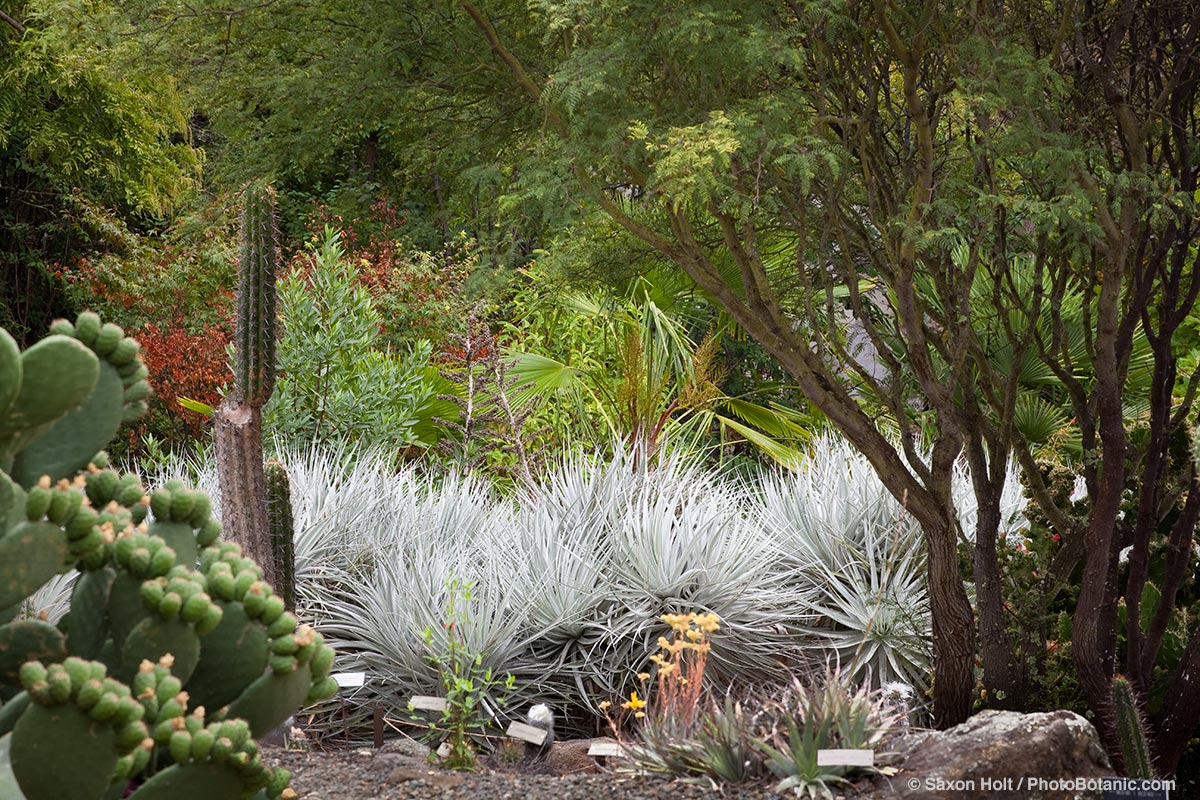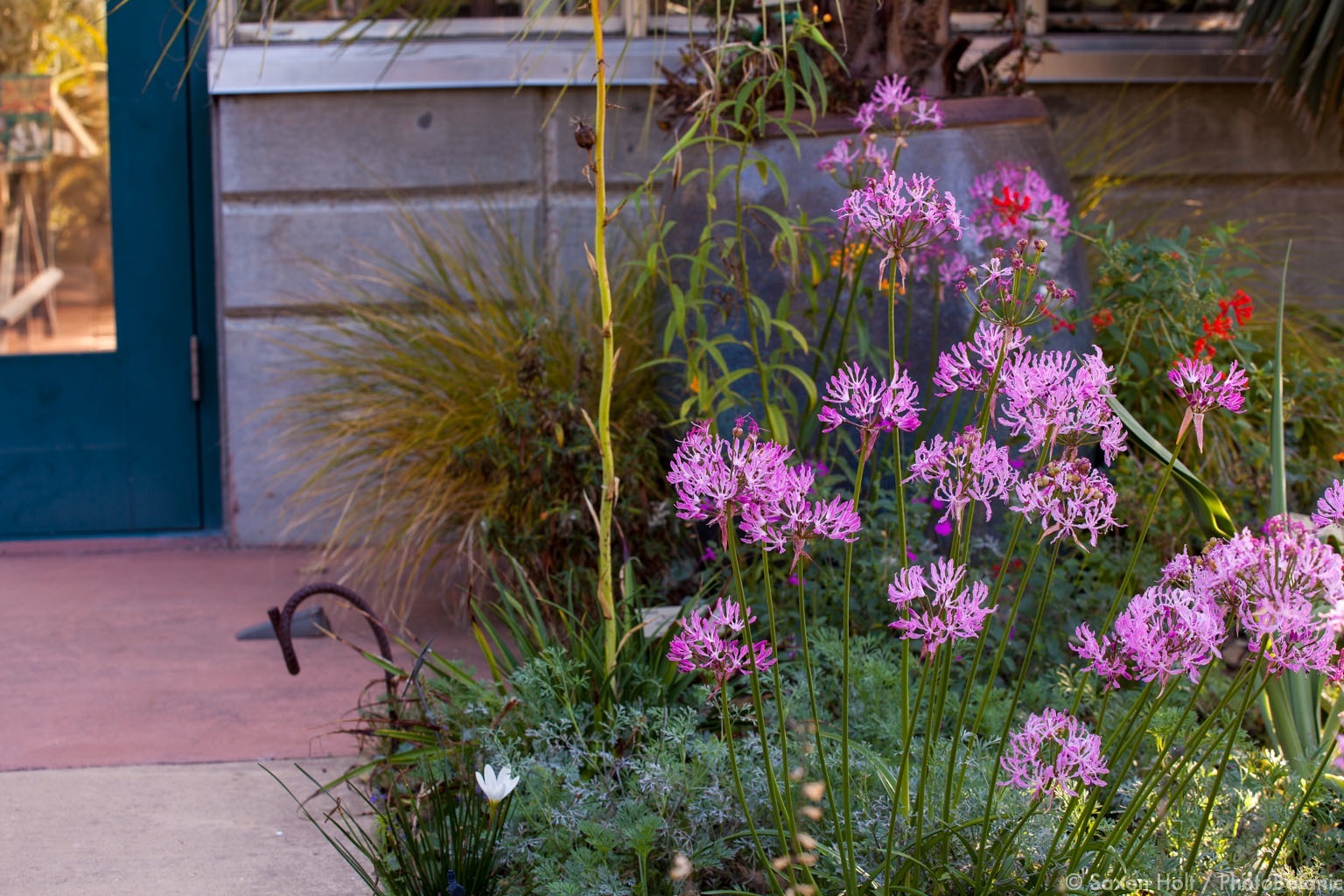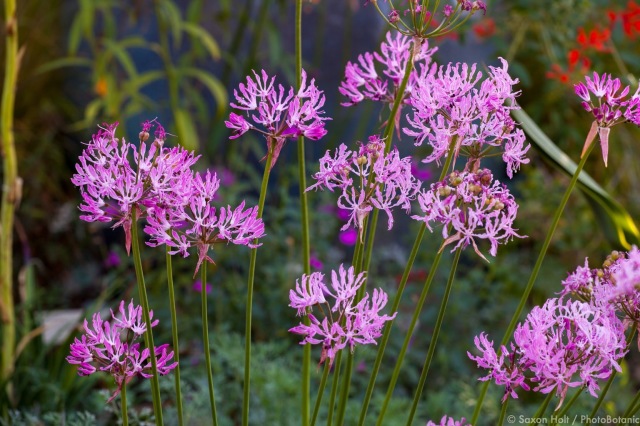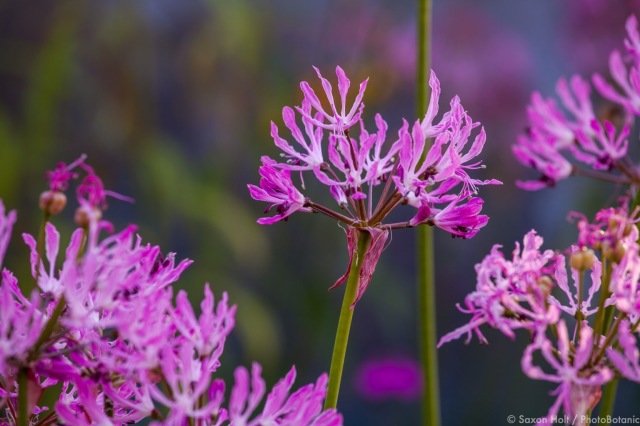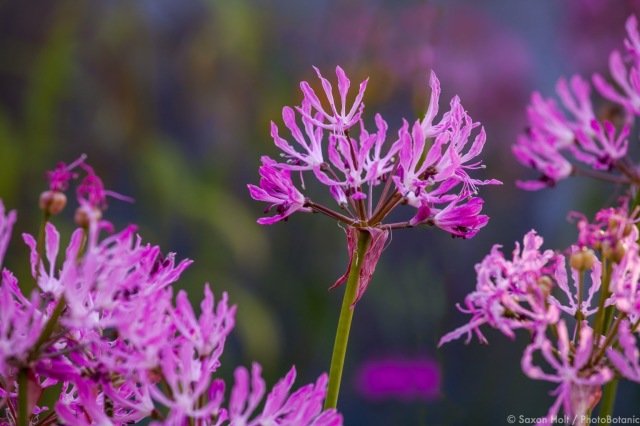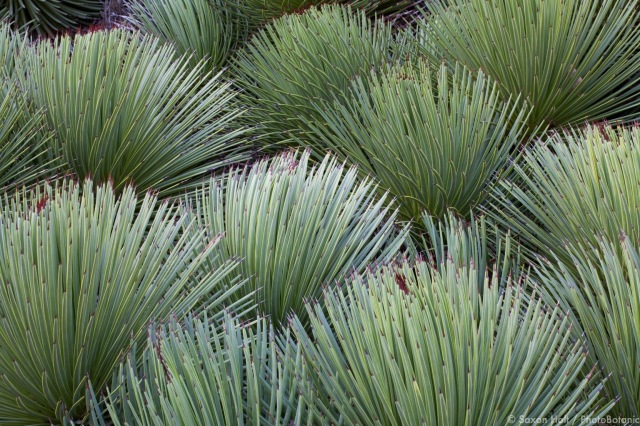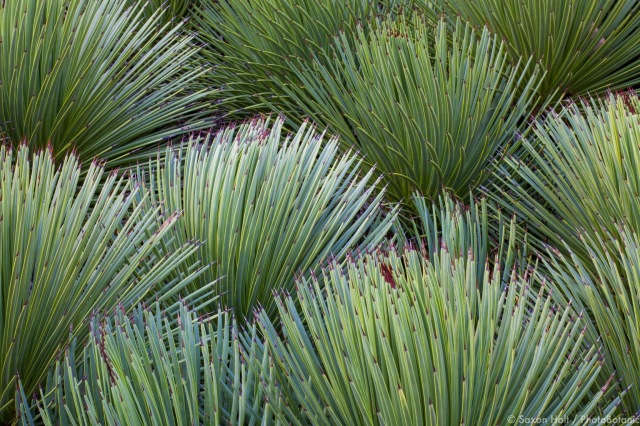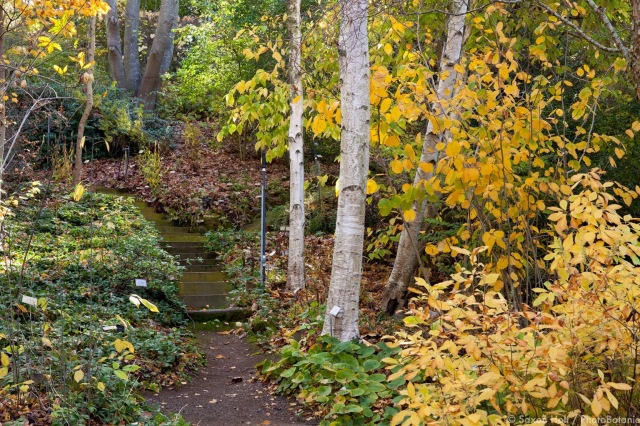Whenever I do photography workshops I visit the garden just before to get a head start on what the students will see. So it was with great delight I recently visited UC Berkeley Botanical Garden.
My workshop is from my new PhotoBotanic Garden Photography e-book, the lesson on Composition and Balance, and I needed to see what was happening at the garden. I wanted to find good compositions myself.
The best way to start, of course, is to grab your camera and get into the garden. Then let your eyes wander, find something interesting, identify to yourself why you are interested, and then compose in the camera.
As soon as I walked into the garden I was startled to see the pink Nerine in bloom.
How had I forgotten about these fall blooming bulbs, so wonderful for our summer-dry climate ? Must have a photo.
I wanted a frame full of as many flowers as possible to show multiple plants. I got at a low angle so I could show the stems as vertical elements and stack photo with the dots of color.
In framing the composition above I left one stalk on the far left to help hold the eye in the photo and moved the camera around until the puffs of color felt balanced to my eye. This is the fun part of making any composition and every photographer will develop his or her own style. As you move the camera ever so slightly the relationship of each element changes relative to each other.
I also wanted a nice individual flower.
I just could not find an angle that did not show a stalk cutting through the center, but a few minutes with photoshop…
I always use a tripod. It not only allows for a steady camera and longer exposures with good depth of field, I helps in composition. When you lock down the camera and study the composition it will get better.
When I saw these hedgehog cactus, Agave stricta, I knew there must be a great photo using all the repetitive shapes. It would just be a matter of studying the scene.
It didn’t seem quite right – too loose. I don’t really need the top area and the composition will be stronger coming in tighter.
Yes, I could have done that later, cropping in the computer, but it is always better to get it in camera. And studying the composition in camera while standing in the garden is really a lot more fun than trying to “rescue” a photo later.
In walking the garden I found some fall color in the Eastern U.S. section. You folks who are actually the East will no doubt guffaw at what we get in California, but believe me, we are happy to get anything.
Here, I really liked the interplay of white trunks of the Paper Birch tree – Betula papyrifera and yellow foliage of Summer sweet – Clethra alnifolia shrub.
To make an interesting composition I used the strong vertical shapes of the Birch to frame the yellow leaves.
Not quite right. Maybe if I use the trunks in a more graphic way to frame the Summersweet foliage.
Much more interesting. What fun to play with shapes and colors. I hope my students have as much fun as I do . . .

